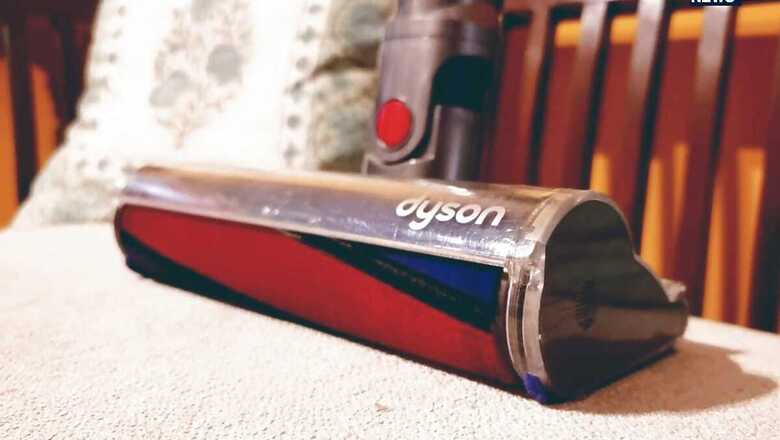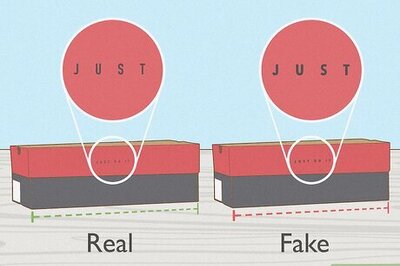
views
Indoor allergen isn’t particularly new, and in many cases, quite unsurprising, too. For many, the impact of dust is difficult to perceive until visible cues become apparent. In these cases, the conventional, Indian ways of cleaning homes have been debatable – sweeping and ‘dusting’ do more to dislodge loose dust particles in the air, and may therefore release allergens in the air that contribute to respiratory diseases. Given the slow nature in which dust and allergens affect us, most of us fail to recognise how dust impacts us in our respiratory tracts, even causing various allergies and rashes.
The use of a vacuum cleaner to combat indoor pollutants have been in place for long, and with cities like Delhi in India reaching new heights in terms of pollution levels, the idea of vacuuming has been pitched by many as no longer being a premium concept for high net-worth households. However, can they be used to substantially reduce the pollutant threat? Or, do they too come with their flaws in recirculating a chunk of the allergens that they claim to ‘clean’?
Risk factor in ‘clean’ homes
The contribution to allergens at home come from multiple sources – spores that latch on to shoes and hems of trousers, seasonal rise in cockroaches and other common pests at home, pets, general dust from polluted outdoor air, and even overall humidity. In January 2021, a house dust study conducted by the FICCI Research and Analysis Centre (FRAC) on behalf of Dyson at one of our residential addresses in Noida revealed an interesting dust profile, marking high bacterial and fungal count, significantly high fine dust particles, cockroach allergen, and cat and dog allergen as well.

Through the FRAC-Dyson dust report, there were two major surprises. The first was the high fungal count, which Dennis Mathews, a microbiology research scientist at Dyson, confirmed to News18 is more typical to cities with generally high humidity levels such as Mumbai. Given that our home also did not have resident pets, the significant presence of both cat and dog allergen was an unexpected host.
Mathews further highlighted how the most common particle size at our home was of the smallest size, of between 1-2 microns. These particles are typically classified under PM 2.5 on the commonly referred pollution breakdown scales, and are likely contributed as a result of our home being on the ground floor, and despite having plenty of greenery around, the presence of a nearby construction site may be a major contributor to the invisible dust at our home.
It is this that makes for the most alarming of all the major pollutant factors that Mathews analysed for News18. A February 2021 report published by Greenpeace South-east Asia, in partnership with Swiss air quality technology firm IQAir, claimed that PM 2.5 pollution was a direct causing factor behind 54,000 deaths in Delhi, in 2020. An air pollution guide by the California Air Resources Board (ARB), USA lists the short-term impact of PM 2.5 as “premature mortality, increased hospital admissions for heart or lungs, acute and chronic bronchitis, asthma attacks, emergency room visits, respiratory symptoms, and restricted activity days.”
This, though, is not particularly breaking news, especially in the pollution-ridden National Capital Region territory, and the presence of cockroach and pet allergens were significantly more surprising. For the latter, Mathews says, “If there are no pets at home, these levels could be built up over time from tracking particles in from outdoors through clothes and shoes, and could continue to build up if not dealt with, adequately.” The question is, is vacuum cleaner technology today adept in handling all of the above?
The impact of vacuum cleaners
In April 1993, a research study published by Judith Woodfolk of University of Virginia, in the Journal of Allergy and Clinical Immunology, highlighted how vacuum cleaners could both increase or decrease the presence of particulate matter and allergens depending on their designs. Close to three decades later, vacuuming technologies have improved significantly, but certain roadblocks still remain. A 2012 study chaired by Luke D. Knibbs, assistant professor at School of Public Health, University of Queensland and published in the Environmental Science and Technology journal, found vacuum cleaner emissions to be fairly significant but largely fluctuating at recirculating captured allergens in indoor areas.
More recently, a research study published by the Journal of Scientific Research under the Banaras Hindu University detailed the necessity for cleaning of vacuum cleaner mouthpieces and houses used to collect dust samples for the survey. It is this recirculation of pollutants, coupled with the risk of continued allergens through vacuum cleaners, that represents the biggest threat to even the most powerful indoor cleaning solutions. Major brands such as Dyson, Miele, Shark and others have been looking to work beyond these very factors.
For instance, the motor configuration of a new generation vacuum cleaner such as the Dyson V11 Absolute Pro is such that it succeeds in avoiding puffs of dust arising while cleaning, in almost every circumstance. Furthermore, the modular builds of the main, everyday-use floor, carpet and mattress brushes in its attachments are such that cleaning them is not a difficult task. The one qualm that is yet to be solved is the ejection of the dust compartment, which still creates the large puff of airborne and visible dust every time, while cleaning them. While the technologies in vacuum cleaners have clearly evolved in terms of cleaning power and the variety of attachments that can be used for almost every object at home, such roadblocks still remain – albeit in parts.
Yet, even with the dust ejection puff being an irritant, there is no denying that the use of an able vacuum cleaner is recommendable. The problem, however, lies in their use and impact in a typical Indian household.
The big debacle: Indian homes and habits
The ideal cleaning configuration for the Indian home is the use of a vacuum cleaner to dislodge most of the dust in room corners, surfaces of fans and doors, and subsequent wet cleaning of these surfaces. On top of this, the use of fans in Indian homes create a favourable condition for airborne particles, which are easily dislodged and therefore in constant circulation within home air. The use of air purifiers with detailed air quality displays, such as the Dyson Pure Hot+Cool, shows a clear reflection of this – where it struggles to bring down indoor air particles due to the constant use of ceiling fans.
Cleaning habits of a typical Indian home are such that the use of conventional broomsticks and dusting sticks are not entirely unavoidable. However, the only plausible solution to combat the dust profile of an average Indian home is to bring vacuum cleaners into Indian cleaning habits, as far as possible. While the latest vacuum technologies have reduced the average vacuum noise and made them sustainably cordless with decent battery stamina, the scope for progress is clearly there.
Read all the Latest News, Breaking News and Coronavirus News here.



















Comments
0 comment